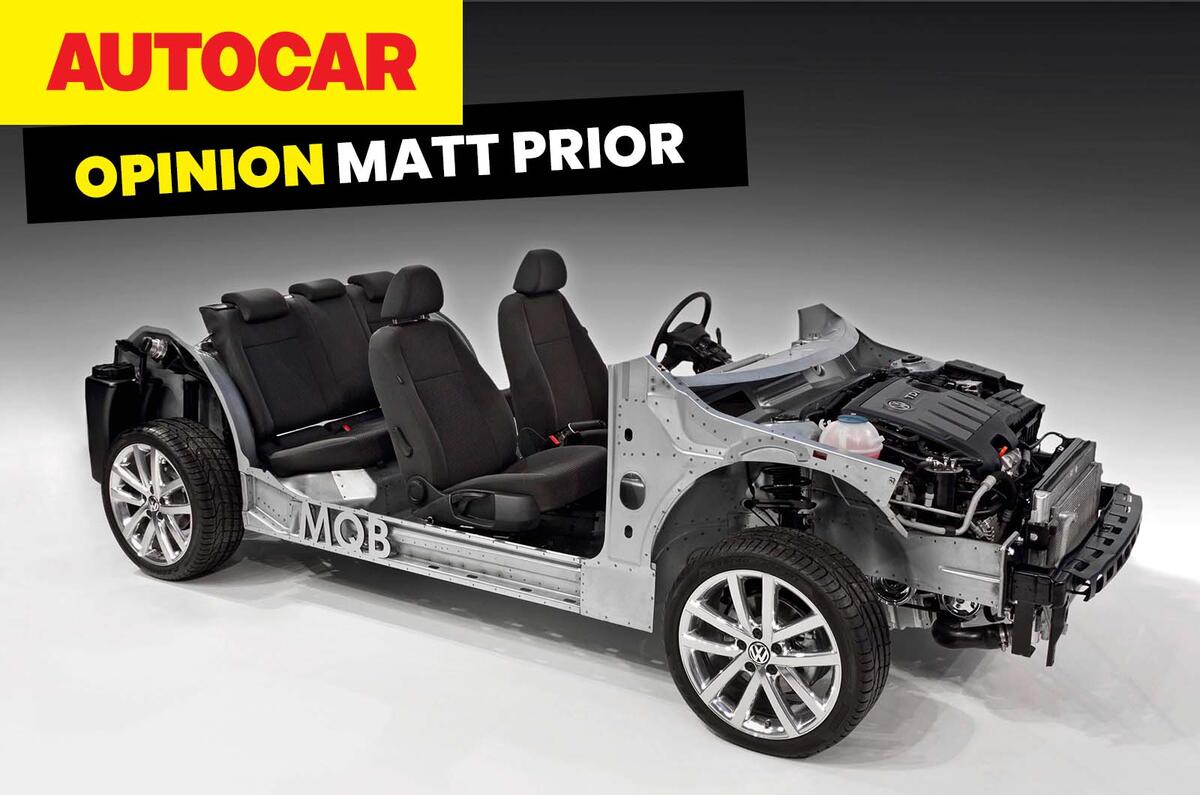There was a time when bosses at car manufacturers didn’t like to talk about platforms – the mechanical underpinnings of their cars.
These are expensive to develop, so big car companies share them across brands, and bosses used to think that it might be perceived as bad news if the public knew that a cheap car was largely the same underneath as an expensive one. So they preferred to keep schtum.
The really difficult and pricey bit to develop was – and still is, most notably in cars with engines – the area between the front wheels and the driver, because largely everything substantial goes into it.
There’s the engine itself, of course, plus the transmission, while behind it is the dashboard and everything that entails, including a whole heap of the electronics – more electronics than ever. Behind it is, put in very crude terms, something a car is just dragging around. So the same platform can host many different lengths of car.
That whole area is where the hard work goes. It has to be compact enough that a driver can see over the top of it. The structure around it has to be rigid enough to properly support the suspension and strong enough to support the forces flowing from the doors in a side impact. And yet it needs to be flexible enough to absorb frontal impacts without forcing the whole shebang into the passenger compartment.
More recently, it’s where loads of active safety and convenience equipment – sensors, cameras and more – have had to be mounted too.
Throwing in the fact that engines and gearboxes are now far more complex than ever means this part of a combustion-engined car is by some distance the most critical and expensive bit, so if a car maker can engineer it once and use it multiple times, so much the better.
Whatever decisions a manufacturer makes in this area therefore defines a raft of models. But thinking that customers wouldn’t necessarily appreciate knowing that, they didn’t always want to talk about it.







Join the debate
Add your comment
That's the liberties you earn when you work on building a reputation for good engineering practices from past vehicles over decades. It's like people buying BMW 1 Series when it will handle no better than any other decent FWD car, however the reputation for entertaining handling was principally built on RWD models which we are constantly told the public does not know or care about what wheels are doing the powering.
Bentley sharing parts with VW, Porsche sharing parts with Skoda, not a problem, Jaguar sharing parts with a Mondeo and you journalists virtually destroyed them and theyve never truly recovered, even though LandRover and Volvo did, but you didnt make a big thing of it.
Journalists need to sell their stories so they write what you want to hear. You're just upset that also did it for your favourite brand.
And no one's more upset than you when their Stellantis clones are high lighted.
This exactly.
Probably been explained elsewhere, but motor-in-wheel must add to unsprung mass, something I was always told to reduce as much as possible.